Garlic is one of the gardeners' favorite crops. Without it, it is difficult to imagine spicy culinary dishes and a number of homemade preparations for the winter. There are different varieties of this plant. Summer garlic - early, it is sown in the spring. Winter (or spring) varieties are planted for winter or "under winter". It is the spring types of garlic that ripen large, vigorous, healthy and fragrant. To get a good crop without fertilizing when planting garlic in the fall can not do.
Content
Do I need fertilizer
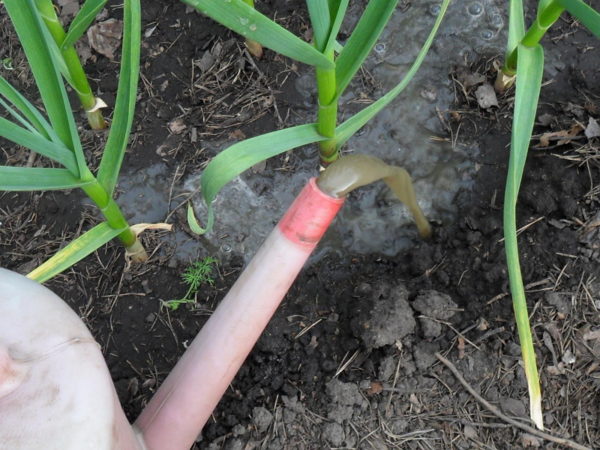 Garlic is a plant with an underdeveloped root system. It does not root deep into the soil and is located in its surface layer. For this reason, it is necessary to fertilize the vegetable when planting in the winter. Only in this way can large and juicy heads be obtained. If you neglect the application of fertilizers, the plant will not grow well, and its teeth will become small and dry.
Garlic is a plant with an underdeveloped root system. It does not root deep into the soil and is located in its surface layer. For this reason, it is necessary to fertilize the vegetable when planting in the winter. Only in this way can large and juicy heads be obtained. If you neglect the application of fertilizers, the plant will not grow well, and its teeth will become small and dry.
Only through targeted work can we achieve a strong and healthy garlic that does not get sick and yields good fruits from year to year. The first step to getting such a crop is preparation of land for garlic beds. It can be started 3-4 weeks before disembarkation.
Land under the garlic bed should be in an open, dry and illuminated place.
Land preparation for planting
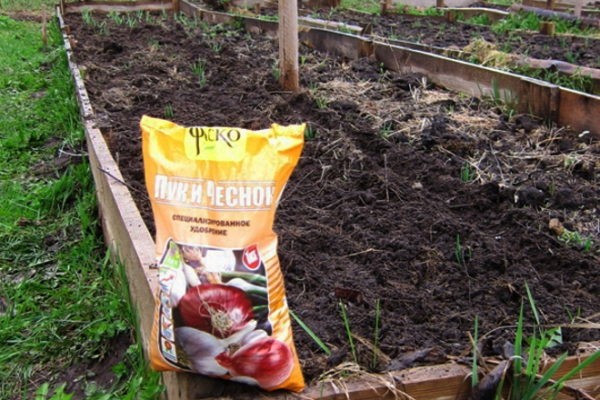
Along with other vegetables, garlic is included in the crop rotation cycle, which ranges from 4 to 5 years. Its predecessors may be:
- all types of cauliflower;
- all kinds of salads and greens;
- cucumbers
- squash.
First, the garden is disinfected by treating it with copper sulfate. To do this, prepare a solution in the ratio of 1 tablespoon to 10 liters of water. After treatment, the soil is dug up. The digging depth should be 20 cm. In this case, all weeds are removed together at the roots so that they do not drown out the young garlic.
The excavated soil is fertilized with humus or rotted compost, with the addition of superphosphate (20 g) and wood ash (1 glass). Prepared soil is abundantly watered and covered with polyethylene. So, the earth will retain splendor, friability, oxygen and will be completely ready for landing.
The best fertilizers in spring and autumn
Fertilizers applied under garlic in the fall are:
- organic (wood ash, manure);
- siderative;
- mineral (complex).
The benefits of ash and manure
Manure is good as a top dressing, but in autumn it is better not to use it. The fruits of garlic will become loose, and the plant itself will be vulnerable to dangerous fungal spores. Due to manure, the growth of the vegetable will go to the green tops, and the heads will grow small.
Wood ash is the best organic for any vegetable. It is fertilized with garlic beds, bringing it with humus and digging the soil. You can plant a vegetable and make wood ash in the furrows on the beds. Two weeks after planting, it is watered with an ash solution. The solution is prepared as follows: take a tablespoon of ash and dissolve it in a liter of water. 2-3 liters of solution is enough for 1 m2.
Chemical (mineral) top dressing
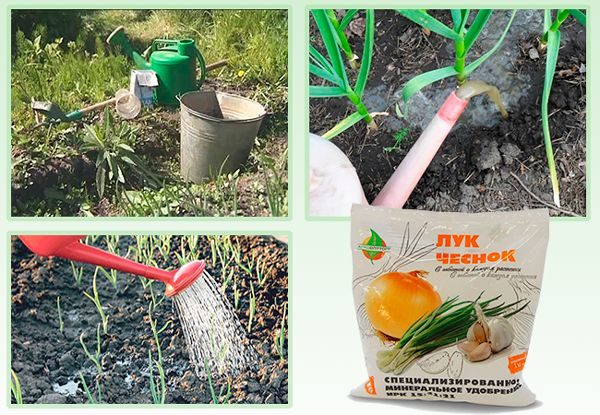 Mineral fertilizers can also be applied in the fall under garlic. Before planting, the soil is fertilized with superphosphates and potassium.Superphosphate nourishes plants, and potassium forms a root system before the onset of winter cold. When making mineral dressings, you need to ensure that they contain less nitrogen. Nitrogen helps build greenery. This can harm winter garlic, as the greens will soon freeze. Nitrogen-containing compounds are introduced into the soil in spring.
Mineral fertilizers can also be applied in the fall under garlic. Before planting, the soil is fertilized with superphosphates and potassium.Superphosphate nourishes plants, and potassium forms a root system before the onset of winter cold. When making mineral dressings, you need to ensure that they contain less nitrogen. Nitrogen helps build greenery. This can harm winter garlic, as the greens will soon freeze. Nitrogen-containing compounds are introduced into the soil in spring.
Superphosphates contain a minimum amount of nitrogen - only 8%. It is well suited to fertilize the land under a vegetable in the fall. In superphosphates, the amount of nitrogen is best balanced with other substances. This ensures the right balance between the root and aboveground parts of plants.
There are several complex mixtures that are specially formulated for garlic. If you fertilize garlic beds with them, the plants will not release green arrows before frost. In addition to superphosphate, you can use the following compounds:
- phosphoric flour;
- potassium salts;
- “Winter” azophos;
- nitroammophosic;
- two-component fertilizers.
All these substances contribute to the strengthening of the root system of winter garlic and its proper growth. They bring them along with other fertilizers - ash and other organic matter.
Siderat Landing
The soil for vegetables in autumn can be fertilized by siderata plants. Garlic gives a good reaction to any organic compounds and cultures - “predecessors”. For this reason, gardeners often use siderates.
As siderates use:
- all legumes (including beans and peas);
- cereals (barley and rye);
- phacelia;
- mustard.
One of the best siderates is considered a white variety of mustard. All of these crops prevent snow from entering the soil. Thanks to them winter garlic tolerates low air temperatures. Siderates also contain essential oils and volatile. They destroy harmful insects and parasitic fungi.
Siderata need to be mowed from the garden a couple of weeks before planting garlic. The bed should be dug up and all the greens in the ground. Depth of embedding is from 15 to 20 cm.
Foliar top dressing
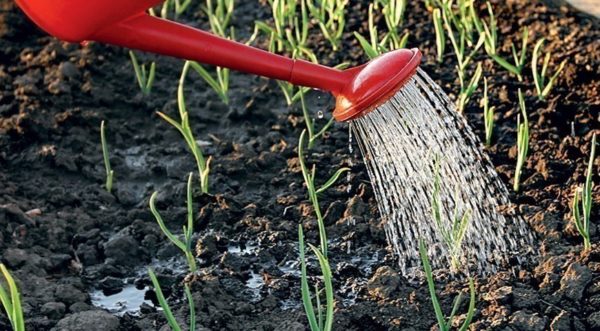 A good crop can be obtained using the foliar feeding technique. Fertilizers are not applied under the roots of garlic, but sprayed over it. When garlic feathers begin turn yellow, the best time for foliar top dressing comes:
A good crop can be obtained using the foliar feeding technique. Fertilizers are not applied under the roots of garlic, but sprayed over it. When garlic feathers begin turn yellow, the best time for foliar top dressing comes:
- urea
- ammonium nitrate.
At the same time, a weakly concentrated solution is used so as not to harm the plant.
Fertilization scheme in autumn
The scheme for applying autumn fertilizers looks like this:
- after snowmelt, the first top dressing is carried out;
- two weeks after the first - the second;
- the third top dressing is done after the first cloves appear in winter garlic. Usually, this happens in the second decade of June.
Such a scheme will help the plant to develop properly and prevent the growth of greenery in the cold. It will also prevent the release of arrows and increase the size of the cloves.
How to fertilize garlic to grow large
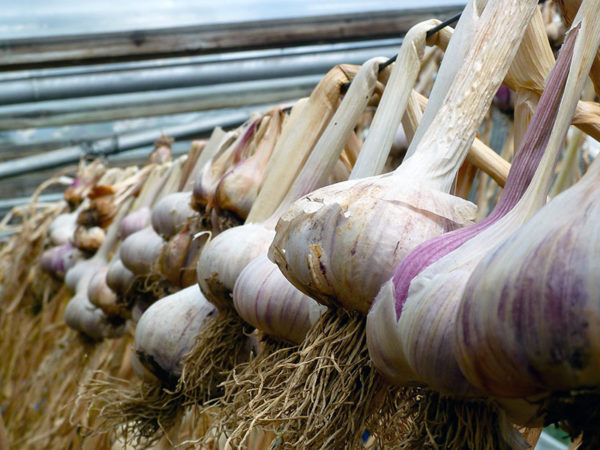 The main organic fertilizer that promotes the growth of large fruits is wood ash. You can also make manure under winter garlic, but not fresh, but rotted. From 1 to 6 kg of manure will be sufficient per 1 m2. A mix of manure and peat will need more, from 8 to 10 kg. Compost from other organic substances is applied to the beds in an amount of 8 to 10 kg per 1 m2.
The main organic fertilizer that promotes the growth of large fruits is wood ash. You can also make manure under winter garlic, but not fresh, but rotted. From 1 to 6 kg of manure will be sufficient per 1 m2. A mix of manure and peat will need more, from 8 to 10 kg. Compost from other organic substances is applied to the beds in an amount of 8 to 10 kg per 1 m2.
How to determine what is missing garlic
If the foliage grows slowly and takes on a pale green hue, the plants lack nitrogen.With the rapid growth of greenery with large arrows, they speak of an excess of nitrogen and a lack of phosphorus and potassium. The ends of the leaves of the garlic are bent down and turn gray-white. They lack moisture.
Fertilizer consumption rates for different types of soils
If you got a plot with depleted soil, you can’t do without fertilizers. When making them take into account the original structure of the earth and the level of its acidity. Work on improving the soil composition will help to grow a good crop and improve the air exchange between the root system of garlic and the external environment. Heavy soils with a high clay content are fertilized with sand - up to 10 liters per 1 m2. If the land is sandy or sandy, it needs peat and fine clay, at a ratio of 10:10 per 1 m2. Swampy soil is enriched with sand and loam (10:10 per 1 m2).
Reviews
Vasily (Ryazan region)
“I grow winter garlic on the plot. Usually, the harvest was small. The heads grew strong, but small. The neighbor advised to fertilize the soil with wood ash. The result was excellent: garlic grew large and juicy, without going into the green mass. I was very pleased with the result, now I fertilize the garlic with ash every year. ”
Rita (Perm)
“I decided to conduct an experiment at growing winter garlic and planted mustard in the garden. At a forum of gardeners, she read that mustard is one of the best siderates. Everything was confirmed in practice. Planted mustard, then dug up a bed. Garlic not only suffered winter, but also pleased with its large fruits and excellent taste. ”
When growing winter garlic, you need not only to remove weeds and water the plant, but also to fertilize. This work will certainly pay off: you will get a large crop of garlic with excellent taste.

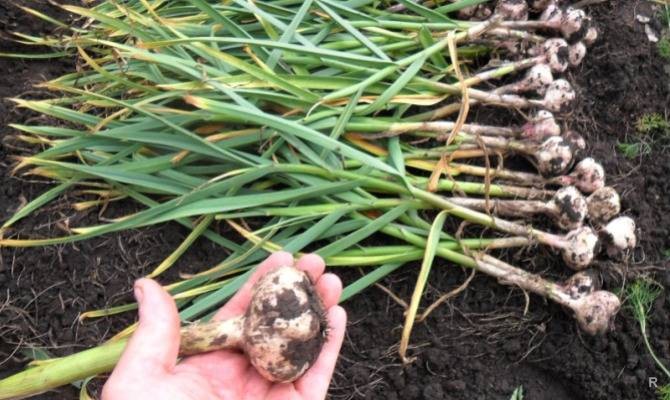
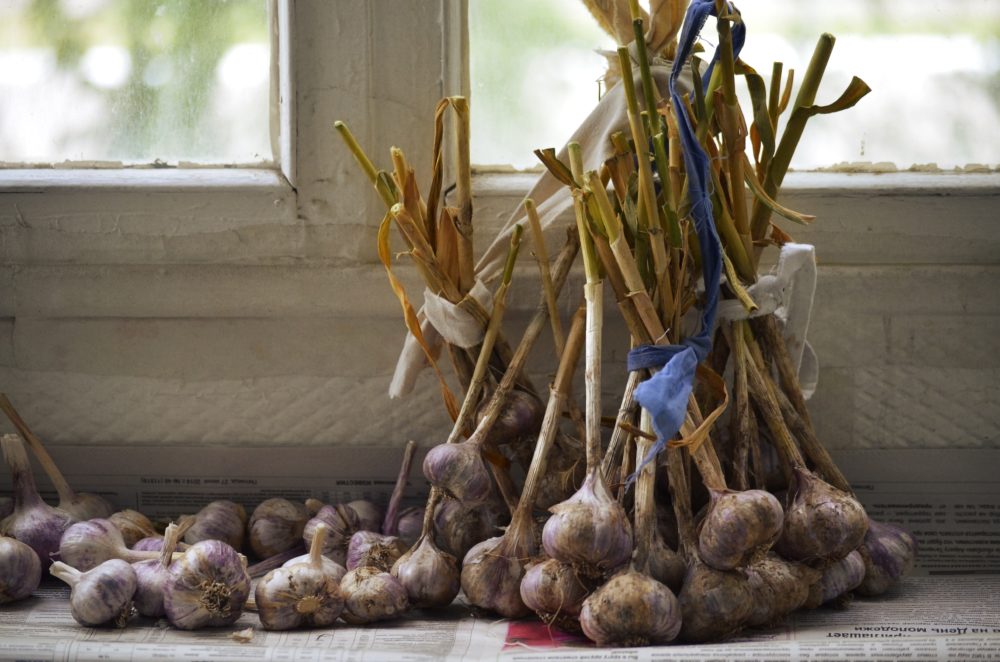
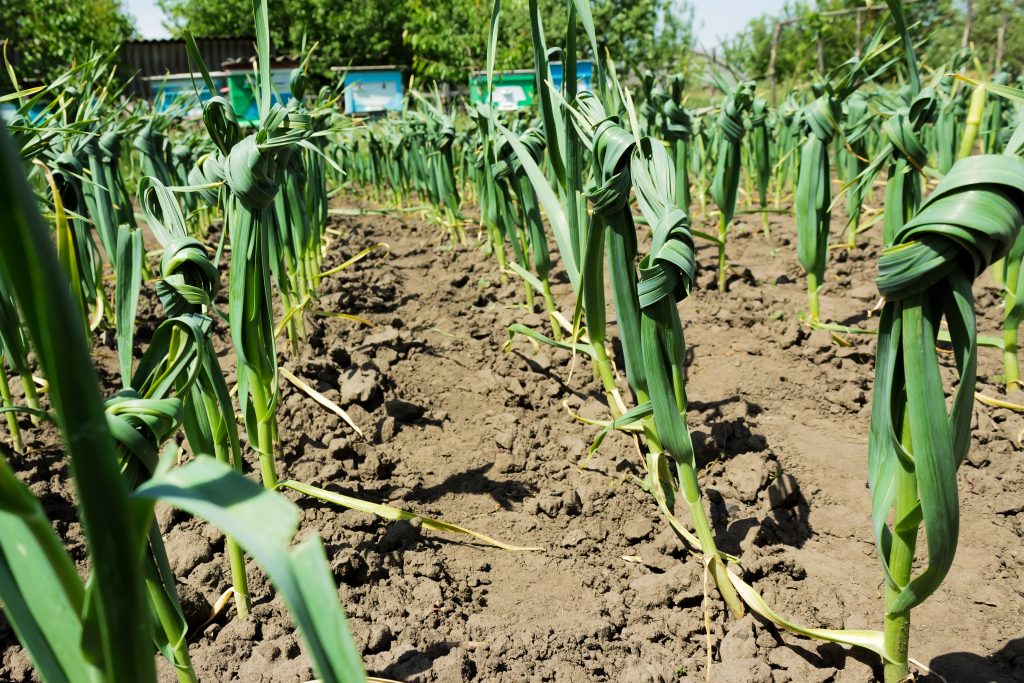
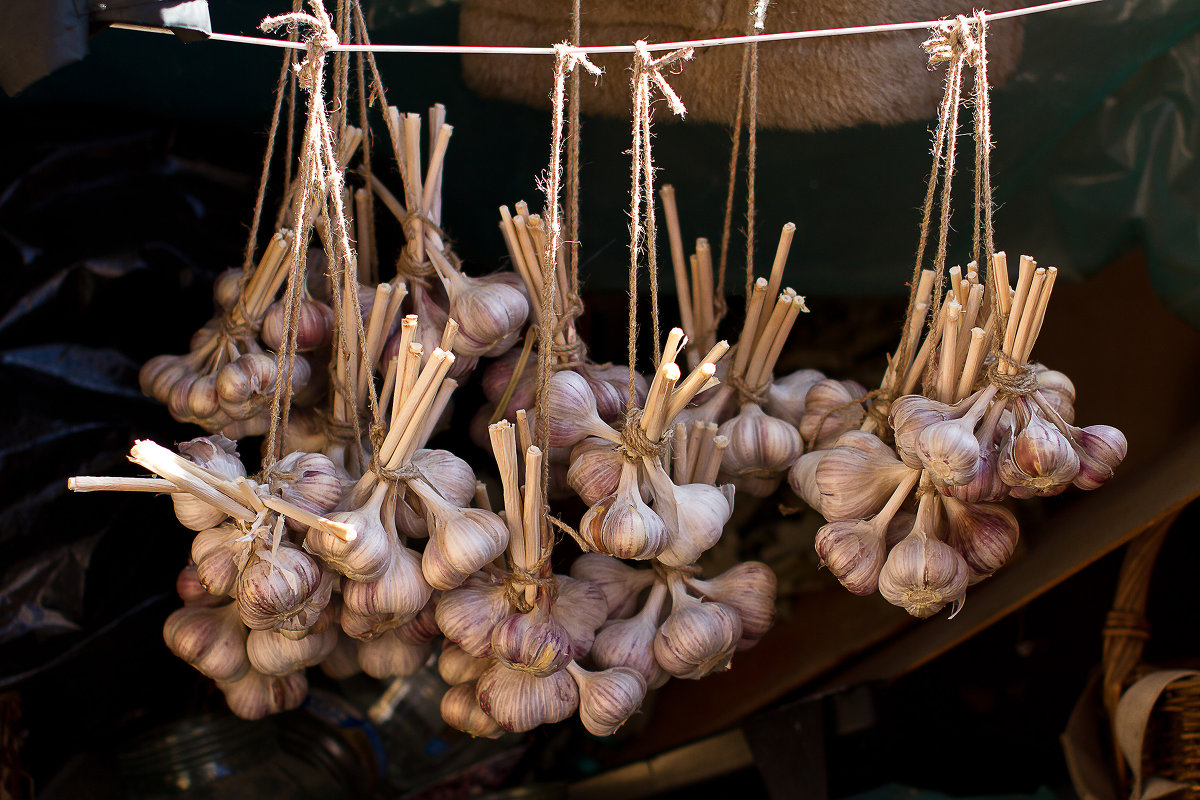 Methods for storing garlic in the winter at home
Methods for storing garlic in the winter at home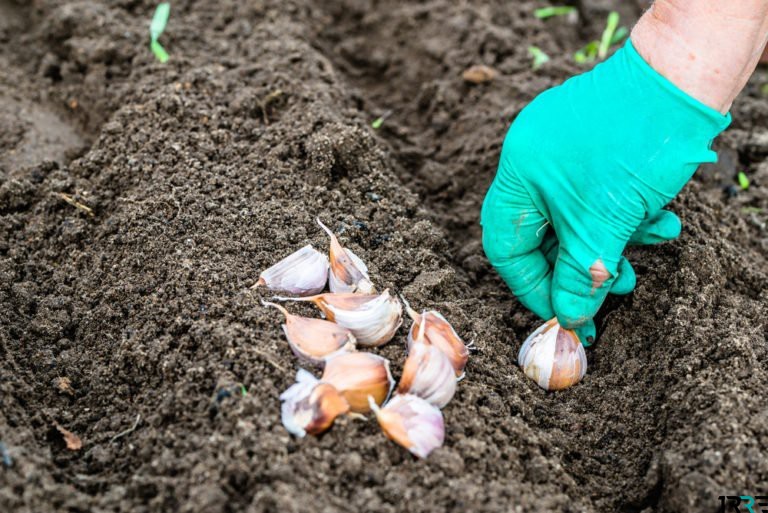 Processing garlic before planting in the winter: soaking garlic and tillage
Processing garlic before planting in the winter: soaking garlic and tillage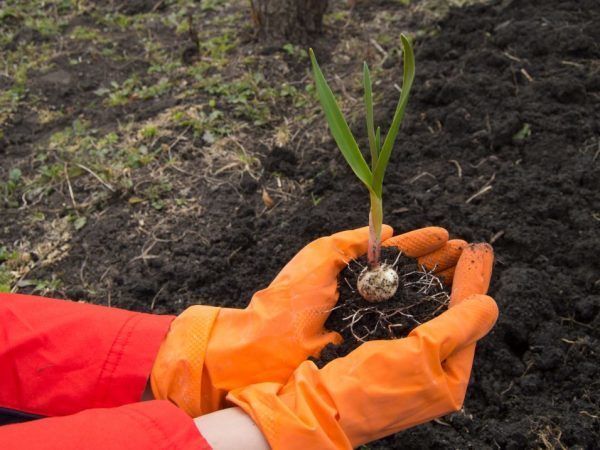 Fertilizers when planting garlic in the fall: how to fertilize the soil
Fertilizers when planting garlic in the fall: how to fertilize the soil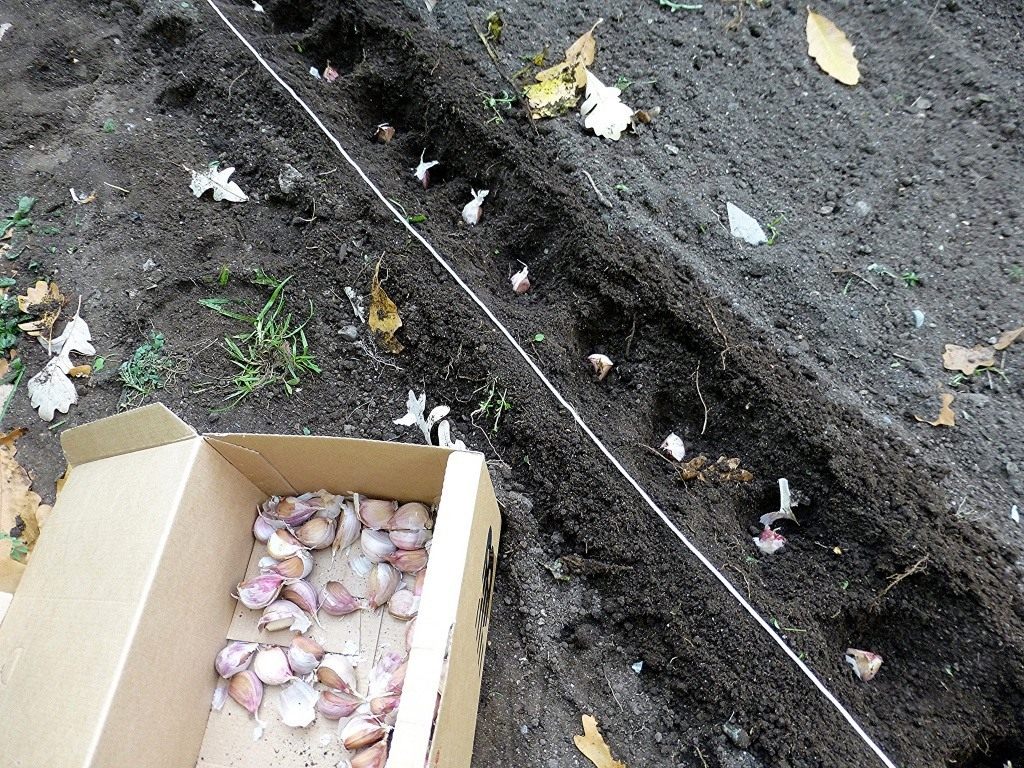 Features planting garlic in the winter in the fall
Features planting garlic in the winter in the fall